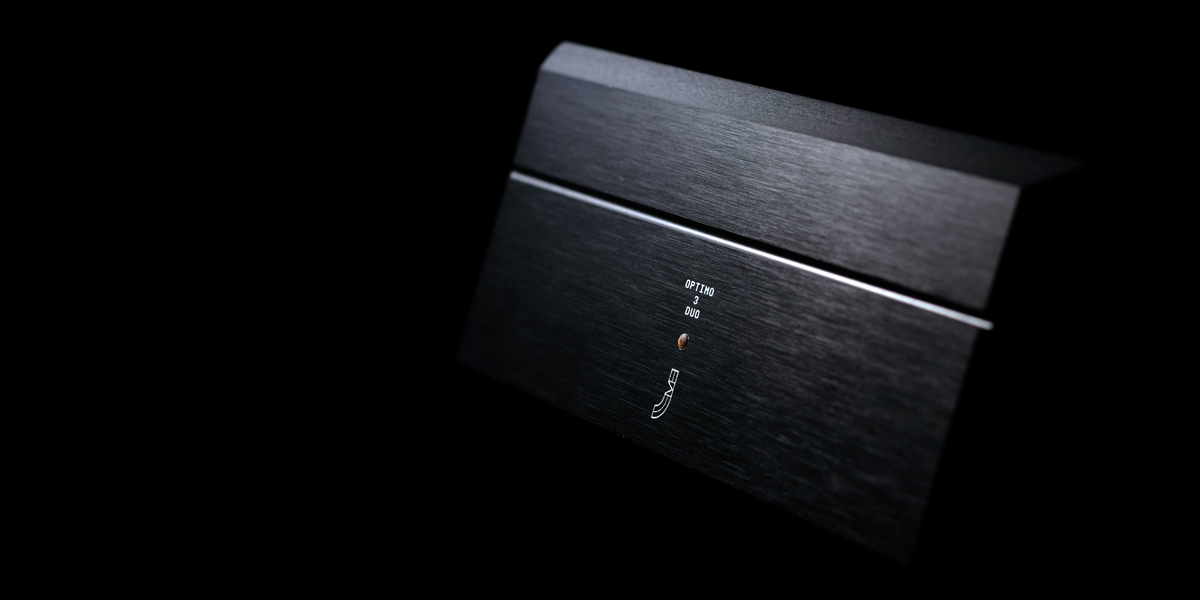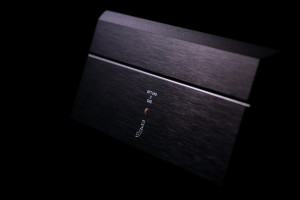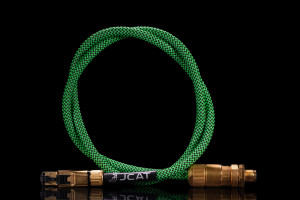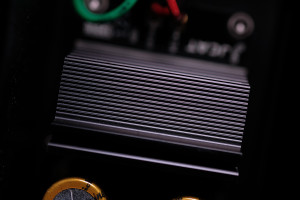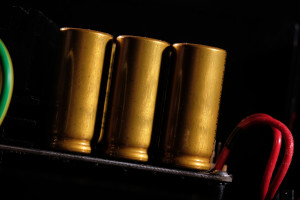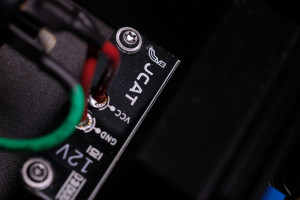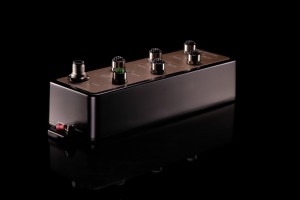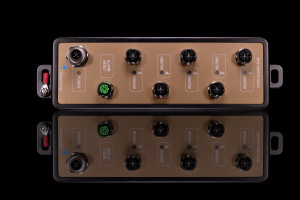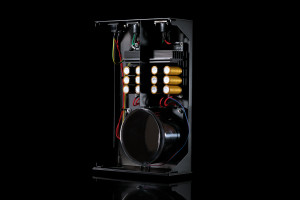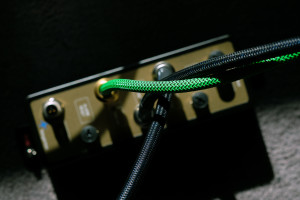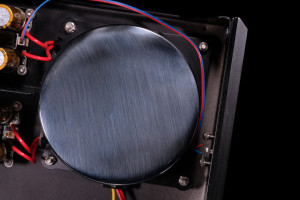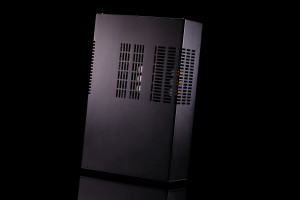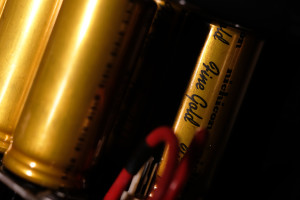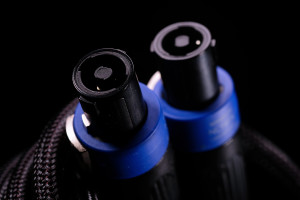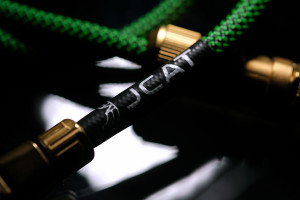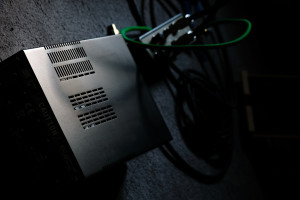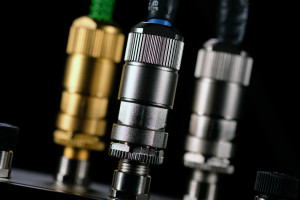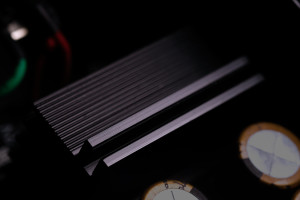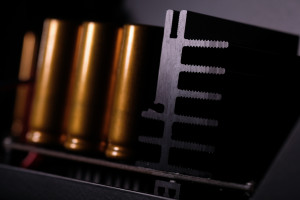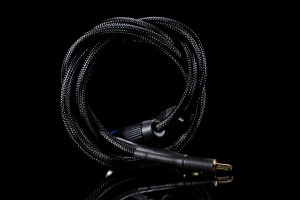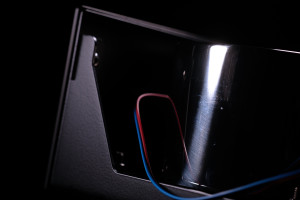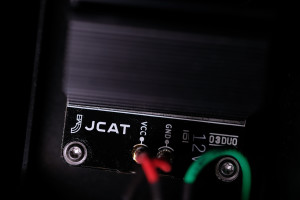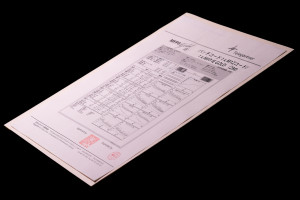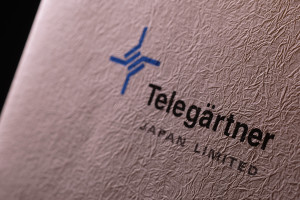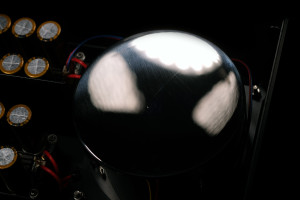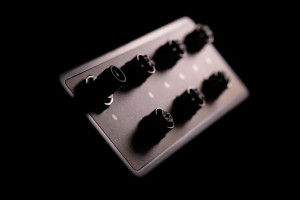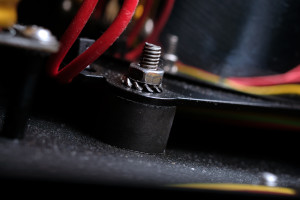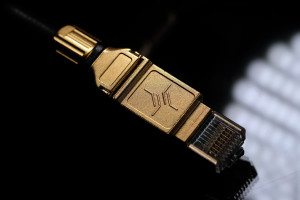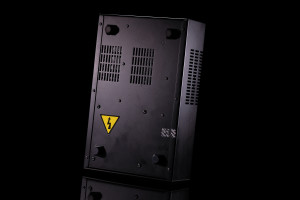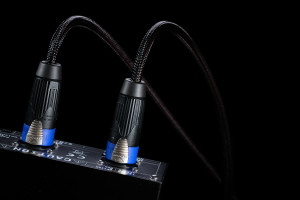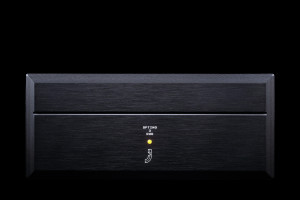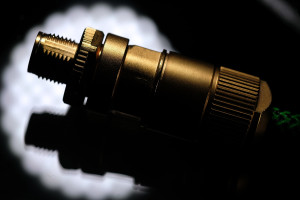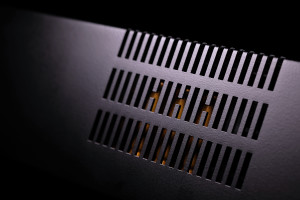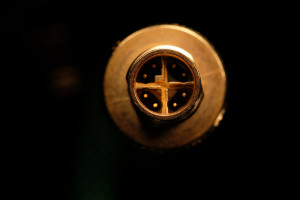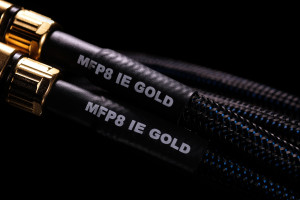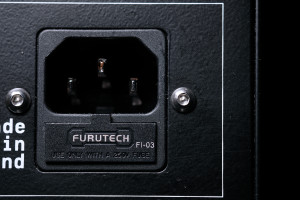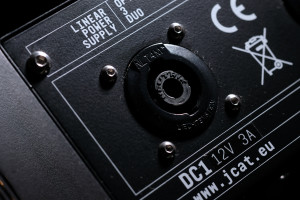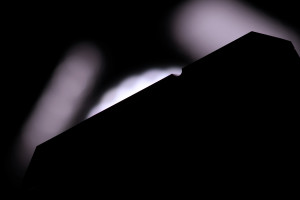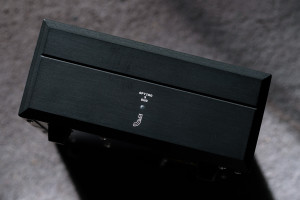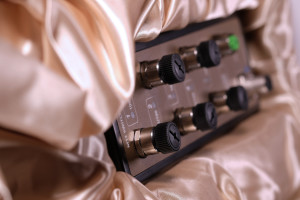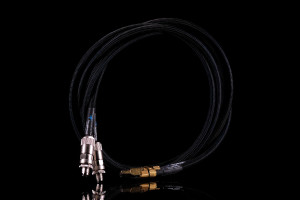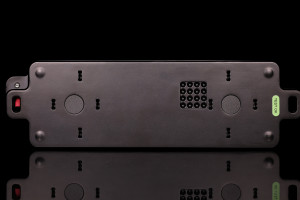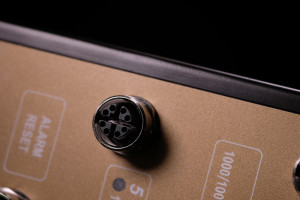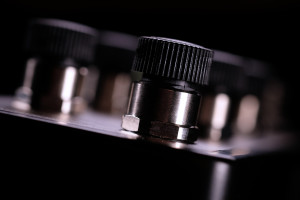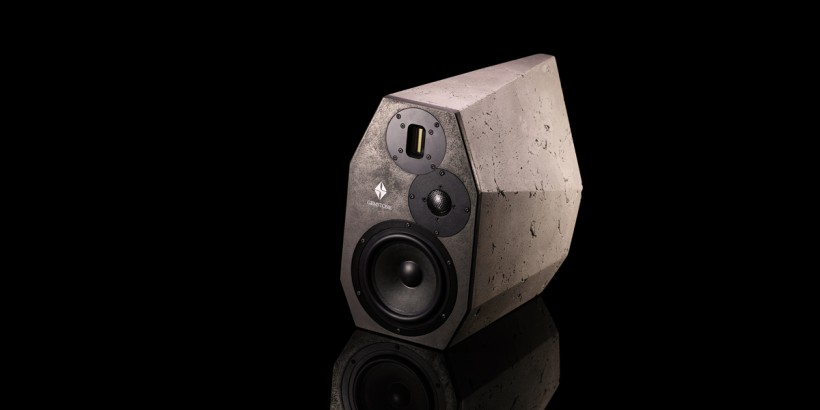Although most audio accessories are rather innocent expenses, some can bleed our wallets dry with ease, and Telegärtner M12 Switch Gold, JCAT Optimo 3 Duo and JCAT Signature LAN Cable GOLD M12 X fit the description very well. But is this stack worth its undeniably hefty coin? That’s what we’re about to find out.
Introduction
The JPLAY/JCAT owner Marcin Ostapowicz has been very busy recently. A while ago his software business landed a major update baptized FEMTO, whereas the latter brand became Telegärtner’s exclusive distributor in EU and USA, which naturally incentivized the man to promote this operation’s network switches. However, Marcin’s holistic take on audio led him outside of his usual bubble. He was after a product that would connect his roster in even more synergistic fashion, which took about a year of extensive work. Eventually this effort resulted in JCAT Optimo 3 Duo linear power supply. Although this box is fit for duty with both Telegärtner’s and JCAT’s own hardware, its compliance list extends to pretty much every device externally powered by 5/9/12V DC lines.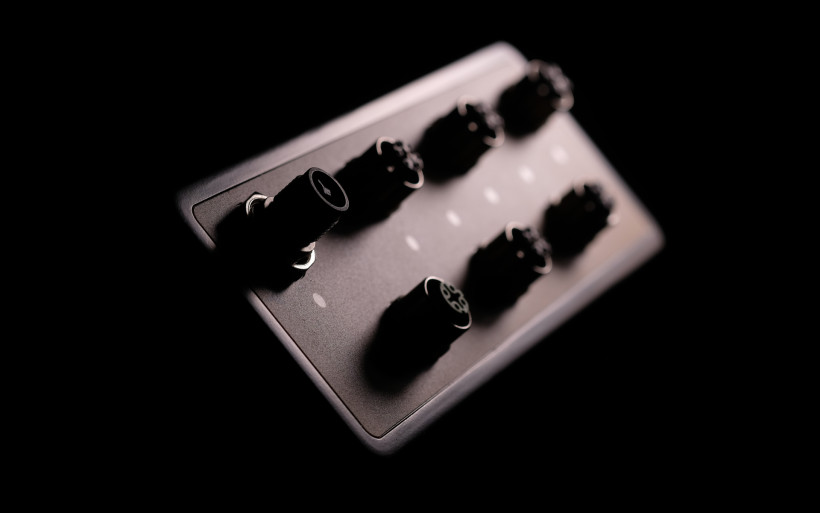 Knowing that Telegärtner’s network devices arrive with switching critters as the standard option, it seemed redundant to ask about the logic behind today’s LPSU, so I didn’t. But when the talk moved beyond common courtesies and steered towards my setup’s compatibility with JCAT Optimo 3 Duo, Marcin had to have a mischievous grin on his face. At first he didn’t say a word but politely asked about what I had available. Past getting familiar with my modest DC-powered list, he then suggested Telegärtner M12 Switch Gold as perfect for showing what his linear PSU is truly capable of. I kept my cool and pretended that I saw it coming from a mile away. This move of course had a lot of marketing sense to the JCAT/JPALY’s CEO, my agreement to his loaner set would mean two his birds killed with one stone after all. But knowing the man and hearing about his lot’s supposedly wicked performance, unsurprisingly I was intrigued.
Knowing that Telegärtner’s network devices arrive with switching critters as the standard option, it seemed redundant to ask about the logic behind today’s LPSU, so I didn’t. But when the talk moved beyond common courtesies and steered towards my setup’s compatibility with JCAT Optimo 3 Duo, Marcin had to have a mischievous grin on his face. At first he didn’t say a word but politely asked about what I had available. Past getting familiar with my modest DC-powered list, he then suggested Telegärtner M12 Switch Gold as perfect for showing what his linear PSU is truly capable of. I kept my cool and pretended that I saw it coming from a mile away. This move of course had a lot of marketing sense to the JCAT/JPALY’s CEO, my agreement to his loaner set would mean two his birds killed with one stone after all. But knowing the man and hearing about his lot’s supposedly wicked performance, unsurprisingly I was intrigued.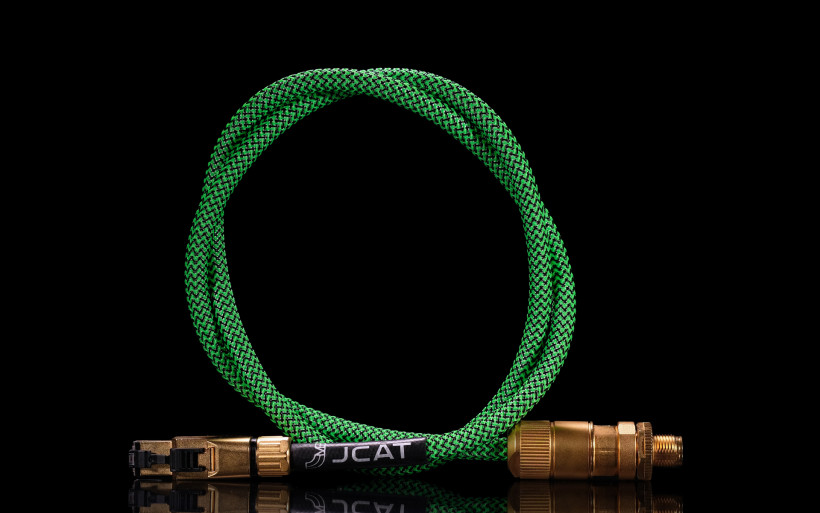 This report should be seen as the next chapter of the Telegärtner M12 Switch Magic story published about a year ago here. If today’s tale was released then, it most likely wouldn’t resonate as loudly as it should. Several fairly recent assignments granted me access to better understanding of what I’m about to deal with now. Although this report’s loaners form one unapologetically expensive package, experiences with Telegärtner’s and Fidelizer’s switches, my own iFi stack and Innuos PhoenixUSB surely helped in properly wrapping my head around it. The game was afoot.
This report should be seen as the next chapter of the Telegärtner M12 Switch Magic story published about a year ago here. If today’s tale was released then, it most likely wouldn’t resonate as loudly as it should. Several fairly recent assignments granted me access to better understanding of what I’m about to deal with now. Although this report’s loaners form one unapologetically expensive package, experiences with Telegärtner’s and Fidelizer’s switches, my own iFi stack and Innuos PhoenixUSB surely helped in properly wrapping my head around it. The game was afoot.
JCAT Optimo 3 Duo
A substantial matte black box delivered had its top held in place by magnets and looked nice. The key ingredient found inside was wrapped in a bag and put in-between several levels of precisely cut foam forms. The compartment just below stored two quality (54 PC-OCC copper wires in a Teflon dielectric, double-shielded) 1.2m power cables to connect external devices with the product. Both cords shared Neutrik’s stout speakON SPX series terminations, whereas their opposite ends had 5.5 x 2.1mm and 5.5 x 2.5mm barrels.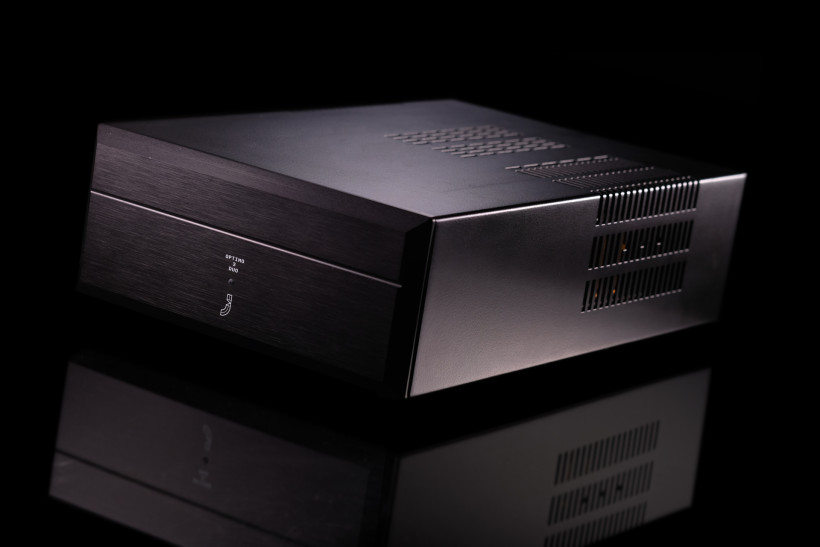 JCAT Optimo 3 Duo measures (W x D x H) 195 x 395 x 85mm, weighs about two kilograms and sits on four rubber trapezoidal feet. Its thick black aluminium forehead with all its edges nicely trimmed features one small horizontal recession with the product’s name, a green LED and the JCAT logo just underneath. One heavily perforated non-magnetic U-shaped steel sheet forms today’s cheeks and top, whereas the business end houses two Neutrik’s speakON SPX locking DC outs and Furutech’s IEC inlet with a self-replaceable fuse by the same company.
JCAT Optimo 3 Duo measures (W x D x H) 195 x 395 x 85mm, weighs about two kilograms and sits on four rubber trapezoidal feet. Its thick black aluminium forehead with all its edges nicely trimmed features one small horizontal recession with the product’s name, a green LED and the JCAT logo just underneath. One heavily perforated non-magnetic U-shaped steel sheet forms today’s cheeks and top, whereas the business end houses two Neutrik’s speakON SPX locking DC outs and Furutech’s IEC inlet with a self-replaceable fuse by the same company.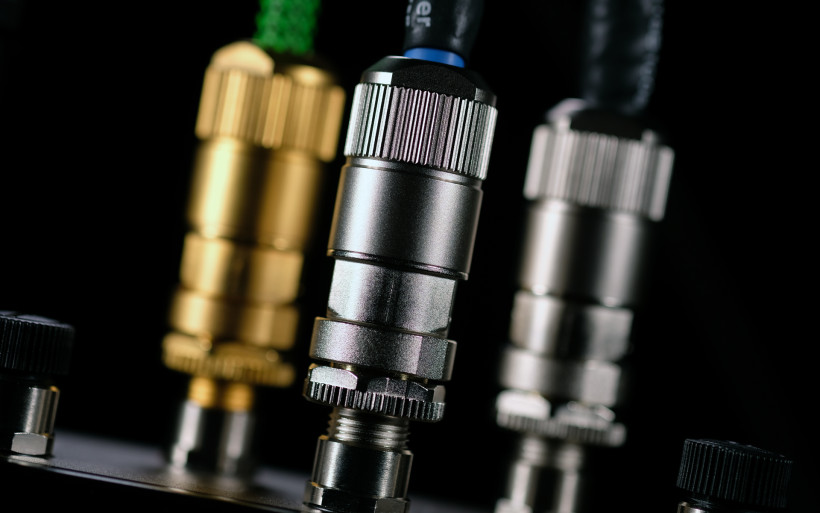 JCAT Optimo 3 Duo’s plug&play nature renders any switches, buttons and knobs as unnecessary, even the on/off option was ditched. Upon connecting the product to the mains, its LED indicates full readiness to work and that’s it, nothing else is needed. Just attach provided power cables to suitable DC-powered devices and you’re good to go. Today’s looks utilitarian and modest, is nicely put together, stable and at best mildly warm during usage.
JCAT Optimo 3 Duo’s plug&play nature renders any switches, buttons and knobs as unnecessary, even the on/off option was ditched. Upon connecting the product to the mains, its LED indicates full readiness to work and that’s it, nothing else is needed. Just attach provided power cables to suitable DC-powered devices and you’re good to go. Today’s looks utilitarian and modest, is nicely put together, stable and at best mildly warm during usage.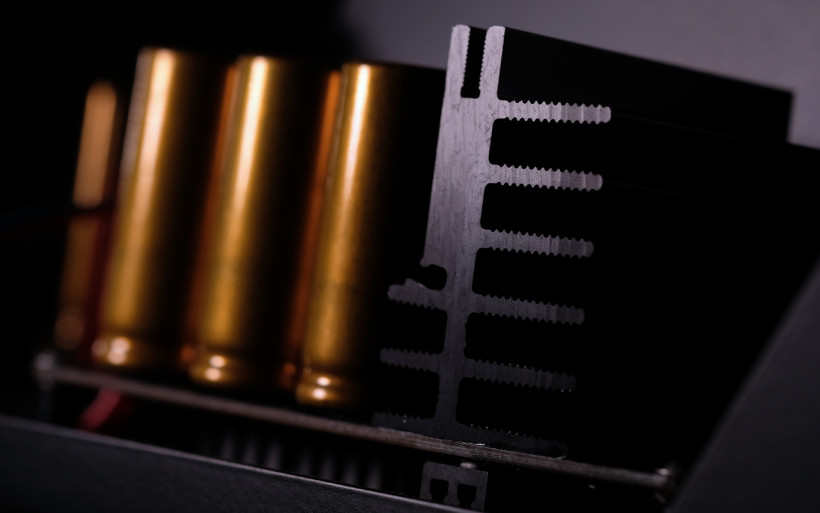 JCAT Optimo 3 Duo’s fully separated double DC outs can independently feed two different products at the same time with no quality loss. Upon order a customer specifies input (115/230V) and each outlet’s output voltage. Although 5V/3A is the default setting, available options extend to 9 and 12V lines, all up to 3A to load. Mix’n’matching is allowed, which means that one socket can provide i.e. 5V/3A, and the other i.e. 12V/3A. Two fine cables in the package also can have their ends customized to match owned hardware. Marcin’s awareness about various customer needs is clear and that’s very good.
JCAT Optimo 3 Duo’s fully separated double DC outs can independently feed two different products at the same time with no quality loss. Upon order a customer specifies input (115/230V) and each outlet’s output voltage. Although 5V/3A is the default setting, available options extend to 9 and 12V lines, all up to 3A to load. Mix’n’matching is allowed, which means that one socket can provide i.e. 5V/3A, and the other i.e. 12V/3A. Two fine cables in the package also can have their ends customized to match owned hardware. Marcin’s awareness about various customer needs is clear and that’s very good.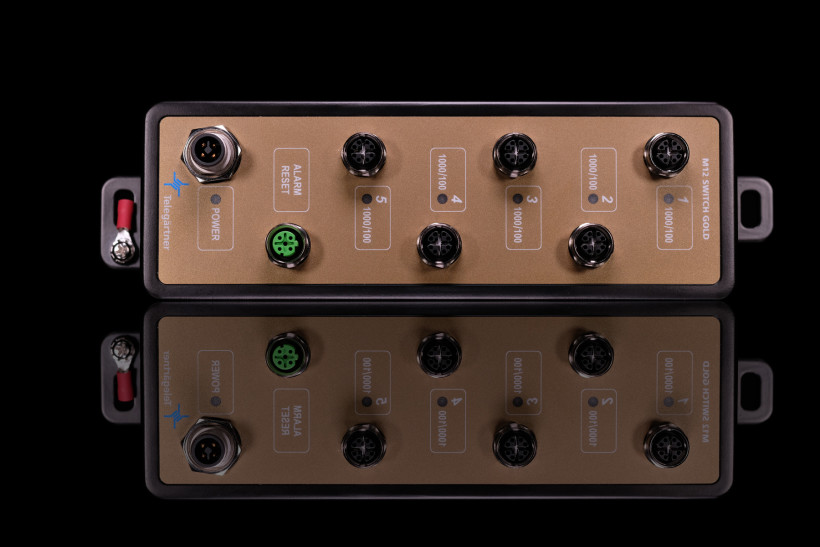 Just as the recently reviewed Innuos PhoenixUSB, this report’s JCAT Optimo 3 Duo also might not internally look like much at first glance. It’s a fully linear design free from any switching power supplies, and it doesn’t need a lot to work. Its custom-made 100VA toroidal transformer was put inside of a magnetically/electrically shielded cowl sealed with epoxy to reduce vibration and self-noise, and this whole bit sits on a steel plate mechanically decoupled from the enclosure’s bottom via rubber pucks. Each power supply board features six LT3045 linear voltage regulators fixed to large radiators. The same number of Nichicon’s 3300 μF Fine Gold series caps provides necessary filtering, whereas Schottky’s diodes are rectifiers of choice. The Optimo 3 Duo’s on-site description informs us about its DC voltage noise level below measuring range (< 2μV).
Just as the recently reviewed Innuos PhoenixUSB, this report’s JCAT Optimo 3 Duo also might not internally look like much at first glance. It’s a fully linear design free from any switching power supplies, and it doesn’t need a lot to work. Its custom-made 100VA toroidal transformer was put inside of a magnetically/electrically shielded cowl sealed with epoxy to reduce vibration and self-noise, and this whole bit sits on a steel plate mechanically decoupled from the enclosure’s bottom via rubber pucks. Each power supply board features six LT3045 linear voltage regulators fixed to large radiators. The same number of Nichicon’s 3300 μF Fine Gold series caps provides necessary filtering, whereas Schottky’s diodes are rectifiers of choice. The Optimo 3 Duo’s on-site description informs us about its DC voltage noise level below measuring range (< 2μV).
Telegärtner M12 Switch Gold
Two separate flat boxes stored the switch itself and two non-standard network cables. These boxes looked rather regular externally, but posh silk-alike golden fabric in case of the M12 Switch Gold struck me as somewhat funny considering this product’s role. Provided components don’t require any extras, so not seeing any I wasn’t surprised. Perhaps I should be by lack of the usual switching PSU with Telegärtner’s TOTL switch, but Marcin wanted me to have a go at it powered by his Optimo 3 Duo, so that’s that.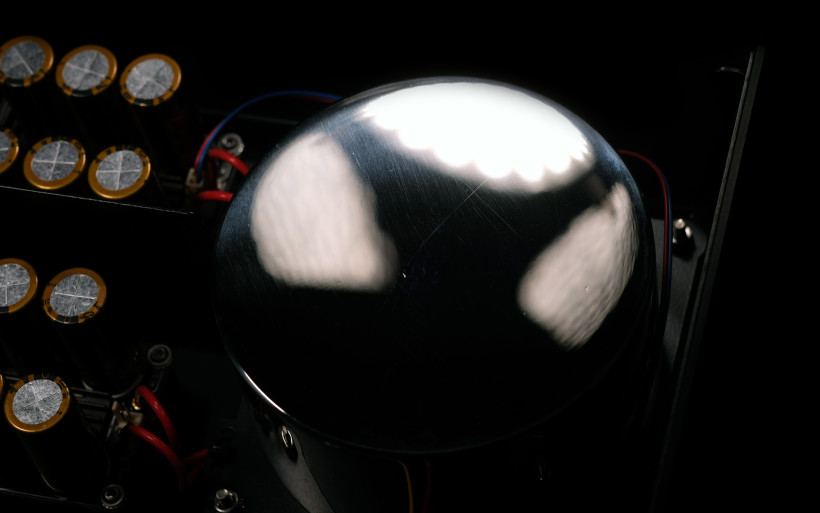 The M12 Switch Gold measures (W x L x H) 70 x 200 x 50mm and weighs 1,5kg. Although petite, this bar feels substantial in hand. Its mildly polished bronze die-cast aluminium enclosure was designed to withstand harsh environmental conditions. Think temperature from -40⁰C up to +70⁰C, and moisture from 5 to 95% without condensation, however this stout chassis also protects internal components from EMI/RFI pollution. If you’re now wondering what those circuits might be, not a living soul outside of Telegärtner’s Japanese plant knows, not even Marcin. A specialist low-noise industry grade mini-computer designed for active network switching would be my careful assumption. Whatever it is, I was told that it’s very sensitive to vibrations, thus to land optimal results decoupling from the floor was strongly suggested. Since my rack had enough space left to accommodate this compact critter, I happily obliged.
The M12 Switch Gold measures (W x L x H) 70 x 200 x 50mm and weighs 1,5kg. Although petite, this bar feels substantial in hand. Its mildly polished bronze die-cast aluminium enclosure was designed to withstand harsh environmental conditions. Think temperature from -40⁰C up to +70⁰C, and moisture from 5 to 95% without condensation, however this stout chassis also protects internal components from EMI/RFI pollution. If you’re now wondering what those circuits might be, not a living soul outside of Telegärtner’s Japanese plant knows, not even Marcin. A specialist low-noise industry grade mini-computer designed for active network switching would be my careful assumption. Whatever it is, I was told that it’s very sensitive to vibrations, thus to land optimal results decoupling from the floor was strongly suggested. Since my rack had enough space left to accommodate this compact critter, I happily obliged.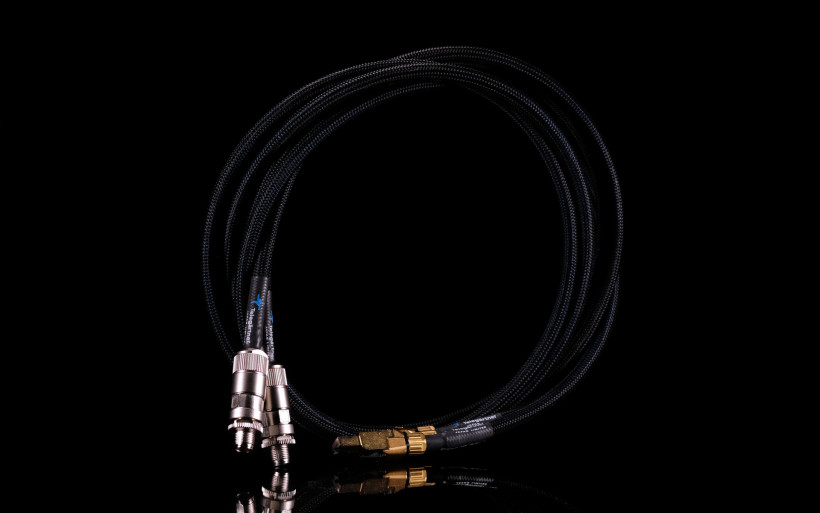 The only visual feature that implies the M12 Switch Gold’s aristocratic pedigree is its grainy golden top. Under seven dummy caps there are as many Telegärtner’s own stout locking sockets; one of each DC power and service inlet plus five STX M12x1 CS X-coded Cat 6A network in/outs. This sight clearly implies that no regular cable affairs will do, which might be seen as a major con. After all, one could rightfully ask what sort of a network switch is it without the usual RJ45 terminations and DC inlet. I hear you, but non-standard very robust connectivity is a part of today’s high performance package. It renders all usual plugs as flimsy in comparison, provides better noise rejection and simply is what it takes this time around. The good news are that Telegärtner’s switches purchased at Marcin’s shop arrive with a DC power supply and two LAN cables terminated with necessary plugs. As long as everything to get going is included in the package and no extra expenses are involved, I’m good.
The only visual feature that implies the M12 Switch Gold’s aristocratic pedigree is its grainy golden top. Under seven dummy caps there are as many Telegärtner’s own stout locking sockets; one of each DC power and service inlet plus five STX M12x1 CS X-coded Cat 6A network in/outs. This sight clearly implies that no regular cable affairs will do, which might be seen as a major con. After all, one could rightfully ask what sort of a network switch is it without the usual RJ45 terminations and DC inlet. I hear you, but non-standard very robust connectivity is a part of today’s high performance package. It renders all usual plugs as flimsy in comparison, provides better noise rejection and simply is what it takes this time around. The good news are that Telegärtner’s switches purchased at Marcin’s shop arrive with a DC power supply and two LAN cables terminated with necessary plugs. As long as everything to get going is included in the package and no extra expenses are involved, I’m good. Speaking LAN cables, the two 2.0m MFP8 IE GOLD leashes provided are no ordinary throwaways. Each features STX M12x1 CS X-coded Cat 6A plug on one end, and MFP8 RJ45 on the other. Interestingly, Telegärtner’s silver MFP8 RJ45s are now used by many audio manufactures into network components, but their gold-plated counterparts famous for their use at the ISS still hold the unobtanium status. The only product with these outside of Telegärtner’s roster was fidata HFLC LAN cable, but Marcin was granted access to this shiny stuff as well. His JCAT Signature LAN Cable GOLD M12 X sports golden connectors a at both its ends, and most likely a posher cable in-between.
Speaking LAN cables, the two 2.0m MFP8 IE GOLD leashes provided are no ordinary throwaways. Each features STX M12x1 CS X-coded Cat 6A plug on one end, and MFP8 RJ45 on the other. Interestingly, Telegärtner’s silver MFP8 RJ45s are now used by many audio manufactures into network components, but their gold-plated counterparts famous for their use at the ISS still hold the unobtanium status. The only product with these outside of Telegärtner’s roster was fidata HFLC LAN cable, but Marcin was granted access to this shiny stuff as well. His JCAT Signature LAN Cable GOLD M12 X sports golden connectors a at both its ends, and most likely a posher cable in-between.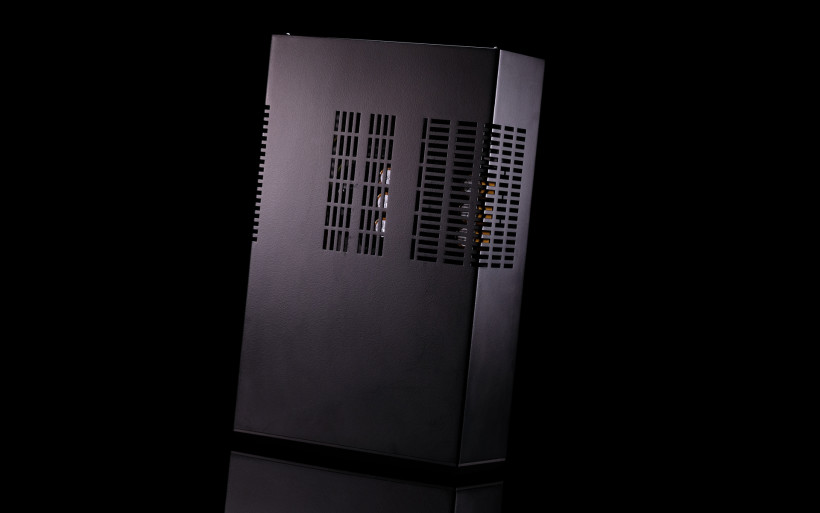 As far as overall put-togetherness goes, this report’s M12 Switch Gold can take quite the beating and its utilitarian status is also clear. Two hitches at its base allow for mounting to i.e. a wall, and a grounding pin might come in handy to combat ground loop noise. Although visually nice and even more robust than the M12 Switch Magic, the golden M12 is still no audiophile jewelry. Its fundamental and only role narrows down to receiving data from a router and then sending it to a downstream network component, or multiple if needed. Once put in there, its action is instant and plug&play. There’s no need to install and configure anything. If you’re now wondering why a product as simple as a network switch should have any impact on audio performance, please think of it as a firewall in-between noisy routers and audio setups. Think a power bar/conditioner, but made for network. At least that’s how I see such accessories after having tried several in the past. If you find that impossible however, my sincere advice for you is to stop reading here and carry on elsewhere.
As far as overall put-togetherness goes, this report’s M12 Switch Gold can take quite the beating and its utilitarian status is also clear. Two hitches at its base allow for mounting to i.e. a wall, and a grounding pin might come in handy to combat ground loop noise. Although visually nice and even more robust than the M12 Switch Magic, the golden M12 is still no audiophile jewelry. Its fundamental and only role narrows down to receiving data from a router and then sending it to a downstream network component, or multiple if needed. Once put in there, its action is instant and plug&play. There’s no need to install and configure anything. If you’re now wondering why a product as simple as a network switch should have any impact on audio performance, please think of it as a firewall in-between noisy routers and audio setups. Think a power bar/conditioner, but made for network. At least that’s how I see such accessories after having tried several in the past. If you find that impossible however, my sincere advice for you is to stop reading here and carry on elsewhere.
Sound
fidata HFAS1-S10U handled storage/transport, then LampizatOr Pacific DAC (KR Audio T-100/Living Voice 300B + KR Audio 5U4G Ltd. Ed.) took over to pass the signal to the following products listed in no particular order; a Thöress DFP, AGD Productions Vivace mono amps, Bakoon AMP-13R, Trilogy 925 and Kinki Studio EX-M1. From there a Boenicke Audio S3 speaker cable connected to either Boenicke Audio W11SE+ or Ø Audio Icon floorstanders. All hardware was powered by LessLoss C-MARCs from a GigaWatt PC-3 SE EVO+ power conditioner, fronted by the same manufacturer’s LC-3 EVO cable. Interconnects used were Boenicke Audio IC3 CG and Audiomica Laboratory Erys Excellence if needed. The USB chain included the full iFi audio stack; three Mercury3.0 USB cables in-between a micro iUSB3.0 and nano iGalvanic3.0, plus one 9V iPower.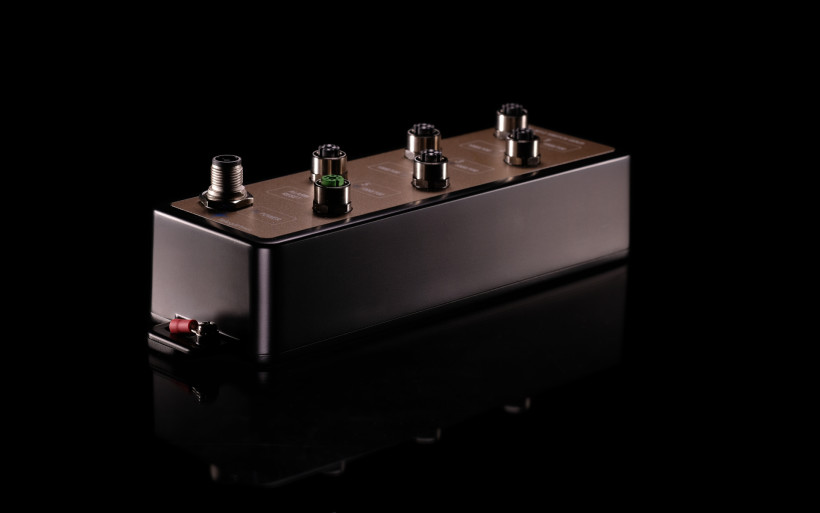 This report’s set was easy to use in practice and worked like a charm from the get-go. After taking a good long look at it and my platform, some cherry-picking was in order. Although JCAT Optimo 3 Duo’s outlets could accommodate two devices, one had to be taken by the M12 Switch Gold. The remaining DC out was fit for handling either iFi audio’s micro iUSB3.0 or the Linksys router. After a brief audition the former unsurprisingly took the cake, which left the other product with iFi’s switching iPower. Marcin’s linear box connected to the Gigawatt PC-3 SE EVO+ power conditioner and sat on the bottom shelf of my rack, just next to the M12 Switch Gold with two network cables installed; JCAT’s Signature GOLD M12 X and MFP8 IE GOLD. The man suggested connecting the superior former leash to the fidata, so naturally the other one went to the Linksys. It’s also worth knowing that this router provides only wireless control over my storage/transport, and as such it doesn’t partake in audio data exchange.
This report’s set was easy to use in practice and worked like a charm from the get-go. After taking a good long look at it and my platform, some cherry-picking was in order. Although JCAT Optimo 3 Duo’s outlets could accommodate two devices, one had to be taken by the M12 Switch Gold. The remaining DC out was fit for handling either iFi audio’s micro iUSB3.0 or the Linksys router. After a brief audition the former unsurprisingly took the cake, which left the other product with iFi’s switching iPower. Marcin’s linear box connected to the Gigawatt PC-3 SE EVO+ power conditioner and sat on the bottom shelf of my rack, just next to the M12 Switch Gold with two network cables installed; JCAT’s Signature GOLD M12 X and MFP8 IE GOLD. The man suggested connecting the superior former leash to the fidata, so naturally the other one went to the Linksys. It’s also worth knowing that this router provides only wireless control over my storage/transport, and as such it doesn’t partake in audio data exchange.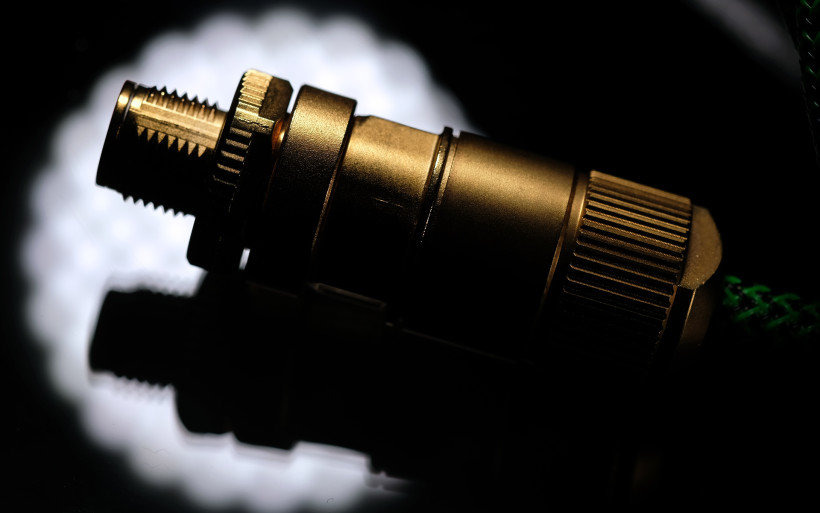 The setup as described had Marcin’s full stack operational in its costly glory, and that was the starting point. Then after a short listen my USB reclocker’s power feed changed from linear to switching in form of iPower, and my router connected to the fidata directly via a RJ45 throwaway to have today’s lot fully disengaged in effect. Next this set was connected again and the whole procedure was repeated as many times as it was necessary to get a proper aural fix. Then Telegärtner’s switch was removed to have isolated JCAT Optimo 3 Duo under my scope. Both its DC outlets at my disposal naturally unlocked the option to have the Linksys and micro iUSB3.0 powered either by this linear PSU, or two iPower critters connected to the Gigawatt as they usually are. The original plan also included Fidelizer’s EtherStream put up against the golden M12, but due to the latter’s non-standard socketry this route was off limits. No RJ45 cable would work with both switches, and knowing how meaningful such cords might be I was out. Instead the Optimo 3 Duo PSU was used with the EtherStream, just to see if I could squeeze extra performance out of this device and either confirm or deny what Fidelizer’s founder Keetakawee Punpeng told me a while ago.
The setup as described had Marcin’s full stack operational in its costly glory, and that was the starting point. Then after a short listen my USB reclocker’s power feed changed from linear to switching in form of iPower, and my router connected to the fidata directly via a RJ45 throwaway to have today’s lot fully disengaged in effect. Next this set was connected again and the whole procedure was repeated as many times as it was necessary to get a proper aural fix. Then Telegärtner’s switch was removed to have isolated JCAT Optimo 3 Duo under my scope. Both its DC outlets at my disposal naturally unlocked the option to have the Linksys and micro iUSB3.0 powered either by this linear PSU, or two iPower critters connected to the Gigawatt as they usually are. The original plan also included Fidelizer’s EtherStream put up against the golden M12, but due to the latter’s non-standard socketry this route was off limits. No RJ45 cable would work with both switches, and knowing how meaningful such cords might be I was out. Instead the Optimo 3 Duo PSU was used with the EtherStream, just to see if I could squeeze extra performance out of this device and either confirm or deny what Fidelizer’s founder Keetakawee Punpeng told me a while ago.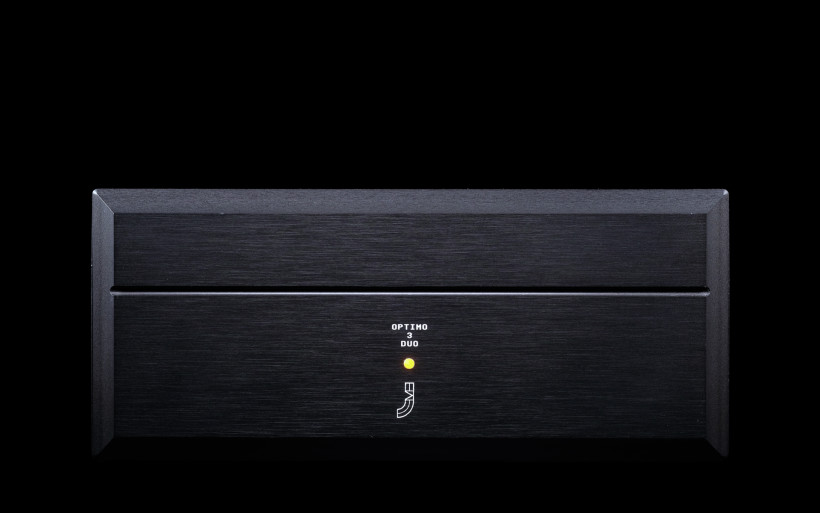 It’s tempting to start by explaining how noise cripples music, and how it flourishes along with addressing this pollution, but by doing so I’d repeat myself. I trust that most individuals interested in this review’s set are at least somewhat familiar with universal groundwork and behavioural pattern of such products. Marcin’s linear PSU and switch didn’t battle against my setup’s accessories on foundational qualities such as backdrop blackness and grain removal, as these bases I already covered long before his loaners’ arrival. This time around we go beyond this breed’s usual input, to a place where music changes at its very core, and is presented from a substantially better angle as a whole. Think universally applicable artful makeup capable of turning an already gorgeous female into an even more stunning beauty, but as recognizable as she ever was. Recently Innuos PhoenixUSB did this exact type of work and Marcin’s set followed accordingly just now. That’s the gist of it, but this sort of work doesn’t come cheap.
It’s tempting to start by explaining how noise cripples music, and how it flourishes along with addressing this pollution, but by doing so I’d repeat myself. I trust that most individuals interested in this review’s set are at least somewhat familiar with universal groundwork and behavioural pattern of such products. Marcin’s linear PSU and switch didn’t battle against my setup’s accessories on foundational qualities such as backdrop blackness and grain removal, as these bases I already covered long before his loaners’ arrival. This time around we go beyond this breed’s usual input, to a place where music changes at its very core, and is presented from a substantially better angle as a whole. Think universally applicable artful makeup capable of turning an already gorgeous female into an even more stunning beauty, but as recognizable as she ever was. Recently Innuos PhoenixUSB did this exact type of work and Marcin’s set followed accordingly just now. That’s the gist of it, but this sort of work doesn’t come cheap.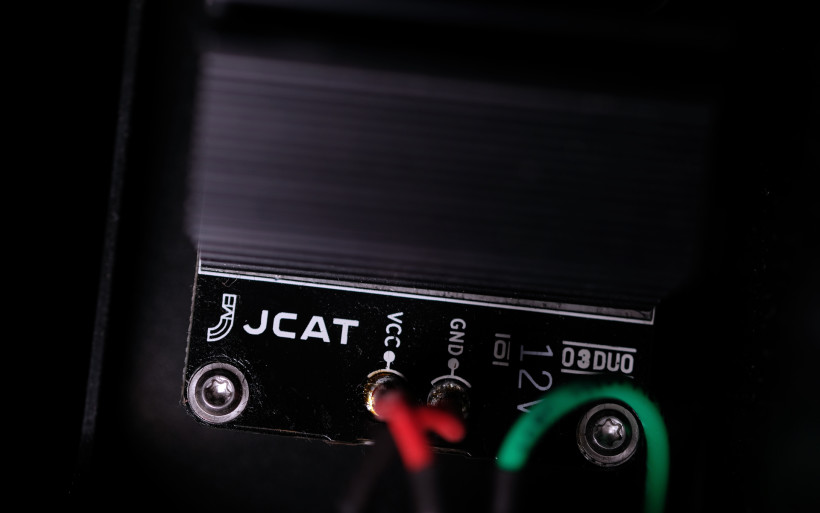 My entire USB pipeline, power conditioner and cables already significantly elevate my rig’s overall performance, but it quickly turned out that without Marcin’s products it sounded bloated, fuzzier, slower and hollow in upper bass. Although the man’s components were on and off duty multiple times, their key contribution was mapped within seconds after the first swap. Not only this lot spread that particularly moist, velvety and silent aroma I already knew so well, but was also powerful enough to leave me enjoyably dizzy. Many individuals not yet familiar with the sensation would be caught off guard and most likely puzzled how two boxes and some cables applied aside the signal path can up the ante this much. Previous adventures with costly noise-killers should render me well-adjusted to the feeling today’s set also invoked, but I’m not. At times sonic shifts are simply too drastic in their nature for my audiophile immunity system to fully cope from the start. Put shortly, Marcin’s stack did enough to turn an audio veteran, that would be yous truly, into a blindsided freshman for a while. After all, hearing accessories as significant as proper audio components is not a daily treat. But each time something of the sort happens, there’s always far more than early infatuations. Today’s the day when we feast.
My entire USB pipeline, power conditioner and cables already significantly elevate my rig’s overall performance, but it quickly turned out that without Marcin’s products it sounded bloated, fuzzier, slower and hollow in upper bass. Although the man’s components were on and off duty multiple times, their key contribution was mapped within seconds after the first swap. Not only this lot spread that particularly moist, velvety and silent aroma I already knew so well, but was also powerful enough to leave me enjoyably dizzy. Many individuals not yet familiar with the sensation would be caught off guard and most likely puzzled how two boxes and some cables applied aside the signal path can up the ante this much. Previous adventures with costly noise-killers should render me well-adjusted to the feeling today’s set also invoked, but I’m not. At times sonic shifts are simply too drastic in their nature for my audiophile immunity system to fully cope from the start. Put shortly, Marcin’s stack did enough to turn an audio veteran, that would be yous truly, into a blindsided freshman for a while. After all, hearing accessories as significant as proper audio components is not a daily treat. But each time something of the sort happens, there’s always far more than early infatuations. Today’s the day when we feast.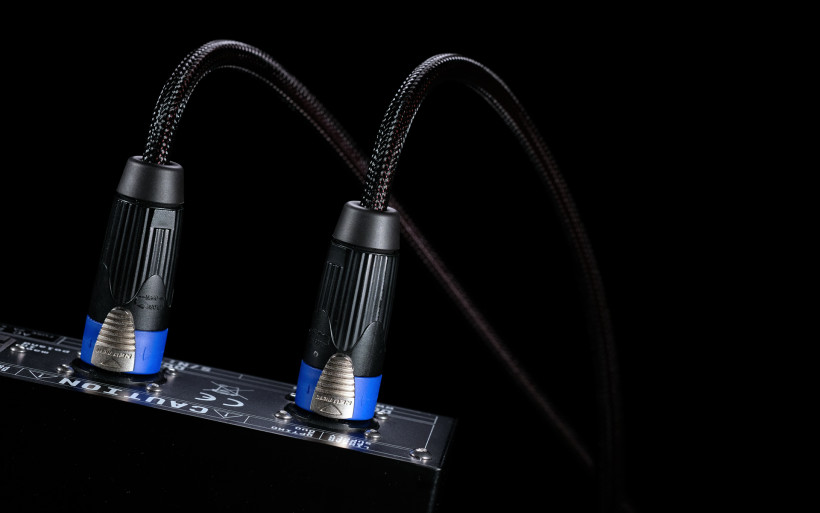 The more hours this report’s products had on their clock, the more it struck me how similar their and Innuos PhoenixUSB’s action was. The Portuguese reclocker aside, Marcin’s network setup did one highly beneficial and distinct job no other noise cleaner thus far could at my place. On feisty tracks the M12 Switch Gold fed by Optimo 3 Duo packed substantially harder and shorter punches, expanded dynamic contrasts, highlighted more particles in air, rendered deeper images, and introduced all key sound sources as fleshier, more present and precisely outlined shapes. It injected some fat under instrumental skin, sounded far more energetic and livelier, and tightened up bass to leave any wobble and hollowness at the door. However, the local team also made mellow, romantic and emotionally engaging repertoire more subtle, stripped from any harshness, longer on decay, aurally more sensible and with vocal lines surrounded by larger, darker, scarier and more enveloping space.
The more hours this report’s products had on their clock, the more it struck me how similar their and Innuos PhoenixUSB’s action was. The Portuguese reclocker aside, Marcin’s network setup did one highly beneficial and distinct job no other noise cleaner thus far could at my place. On feisty tracks the M12 Switch Gold fed by Optimo 3 Duo packed substantially harder and shorter punches, expanded dynamic contrasts, highlighted more particles in air, rendered deeper images, and introduced all key sound sources as fleshier, more present and precisely outlined shapes. It injected some fat under instrumental skin, sounded far more energetic and livelier, and tightened up bass to leave any wobble and hollowness at the door. However, the local team also made mellow, romantic and emotionally engaging repertoire more subtle, stripped from any harshness, longer on decay, aurally more sensible and with vocal lines surrounded by larger, darker, scarier and more enveloping space. All this was no regular noise trimming at work, but something far more meaningful and inherently as universal as it should be. Just as the Innuos, Marcin’s set willingly and utmost capably extracted each track’s natural character to effectively push playback to a higher quality tier. The ability to change music’s gestalt and leave its core profile intact, explains what I had in mind with that makeup analogy. Upon bypassing the M12 Switch Gold and Optimo 3 Duo, all meticulously rendered sonic landscapes this team helped to create collapsed. Music became somewhat coarser, duller, texturally flatter, on bass internally empty and blunt, smaller in scale, dynamically less gifted, and nowhere near as euphonic and resonant as it used to be. The difference was not small by any stretch, which is why today’s efficacy to my ears is quite along the lines of upgrading i.e. a DAC or an amp.
All this was no regular noise trimming at work, but something far more meaningful and inherently as universal as it should be. Just as the Innuos, Marcin’s set willingly and utmost capably extracted each track’s natural character to effectively push playback to a higher quality tier. The ability to change music’s gestalt and leave its core profile intact, explains what I had in mind with that makeup analogy. Upon bypassing the M12 Switch Gold and Optimo 3 Duo, all meticulously rendered sonic landscapes this team helped to create collapsed. Music became somewhat coarser, duller, texturally flatter, on bass internally empty and blunt, smaller in scale, dynamically less gifted, and nowhere near as euphonic and resonant as it used to be. The difference was not small by any stretch, which is why today’s efficacy to my ears is quite along the lines of upgrading i.e. a DAC or an amp. Although it’s not a big problem, my room would have to undergo a major rework to reduce Boenicke W11 SE+ floorstanders’ mild boom and lack of intestinal filler on some recordings, which won’t happen anytime soon. It’s one thing that the Telegärtner/JCAT chain addressed this specific issue brilliantly, but it did so on top of other listed benefits and freedom from sonic penalties as inherent for its breed. If say two years ago I was told that a network switch and linear PSU are capable of providing all this, most likely I would’ve chuckled. Today I won’t.
Although it’s not a big problem, my room would have to undergo a major rework to reduce Boenicke W11 SE+ floorstanders’ mild boom and lack of intestinal filler on some recordings, which won’t happen anytime soon. It’s one thing that the Telegärtner/JCAT chain addressed this specific issue brilliantly, but it did so on top of other listed benefits and freedom from sonic penalties as inherent for its breed. If say two years ago I was told that a network switch and linear PSU are capable of providing all this, most likely I would’ve chuckled. Today I won’t.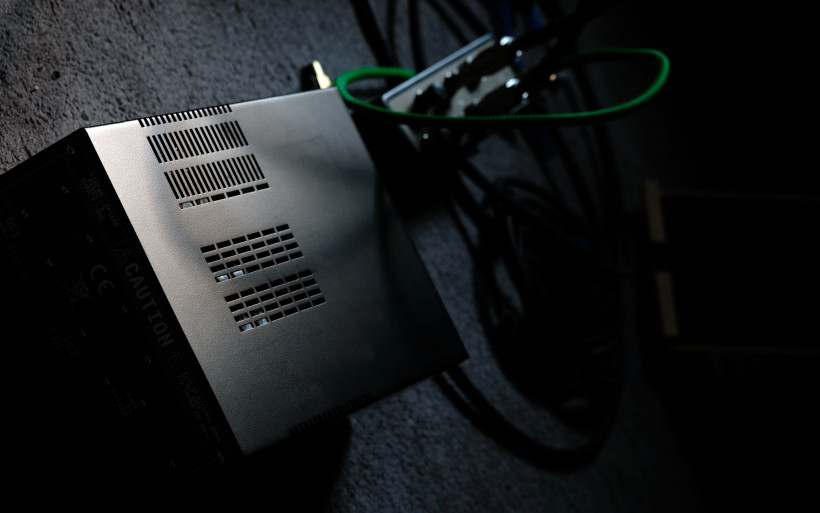 Having insight into the loaner set’s combined action, Telegärtner M12 Switch Gold was put aside. JCAT Optimo 3 Duo now had to fight with iFi audio’s iPower 9V models, whereas micro iUSB3.0 and my Linksys were used to track all changes. To make it short, Marcin’s linear PSU injected extra meat and momentum, projected grander spatial canvas, all key sound sources it put into larger frames moved slightly up front, and it made upstairs heftier and longer on decay. The two DC-powered products connected to iPower switchers netted performance more blurry, with wobbly bass, naturally decreased detail provision and lesser torque. The JCAT acted like a strong glue that connected everything tighter to result in snappier, more substantial, coherent and refined music intake. This highly effective work was by my standards free from downsides and well beyond just polishing touches here and there.
Having insight into the loaner set’s combined action, Telegärtner M12 Switch Gold was put aside. JCAT Optimo 3 Duo now had to fight with iFi audio’s iPower 9V models, whereas micro iUSB3.0 and my Linksys were used to track all changes. To make it short, Marcin’s linear PSU injected extra meat and momentum, projected grander spatial canvas, all key sound sources it put into larger frames moved slightly up front, and it made upstairs heftier and longer on decay. The two DC-powered products connected to iPower switchers netted performance more blurry, with wobbly bass, naturally decreased detail provision and lesser torque. The JCAT acted like a strong glue that connected everything tighter to result in snappier, more substantial, coherent and refined music intake. This highly effective work was by my standards free from downsides and well beyond just polishing touches here and there. It also turned out that the linear box was the one responsible for decreasing boom in my room. To investigate further and confirm micro iUSB3.0’s fondness towards fancy power supplies, the Linksys was fed by iPower and the former remained married to Marcin’s PSU. Everything checked out, iFi audio’s critter was nowhere near as good with the same company’s reclocker. Then Fidelizer EtherStream came into play to exploit Optimo 3 Duo’s one free DC rail. Once used like so, this switch applied extra colour and thickness, but also noticeably tightened downstairs, removed excess chiseling on vocal lines to have them more sensual and delicate. It also acted like a double espresso shot to result in more agile and alive performance. Upon connecting the EtherStream to iPower all this was no more, and obviously enough for me to not have any second guesses. Keetakawee Punpeng was right, his network device likes linear power a lot indeed.
It also turned out that the linear box was the one responsible for decreasing boom in my room. To investigate further and confirm micro iUSB3.0’s fondness towards fancy power supplies, the Linksys was fed by iPower and the former remained married to Marcin’s PSU. Everything checked out, iFi audio’s critter was nowhere near as good with the same company’s reclocker. Then Fidelizer EtherStream came into play to exploit Optimo 3 Duo’s one free DC rail. Once used like so, this switch applied extra colour and thickness, but also noticeably tightened downstairs, removed excess chiseling on vocal lines to have them more sensual and delicate. It also acted like a double espresso shot to result in more agile and alive performance. Upon connecting the EtherStream to iPower all this was no more, and obviously enough for me to not have any second guesses. Keetakawee Punpeng was right, his network device likes linear power a lot indeed. After several easygoing swaps everything became crystal clear. All three DC-powered accessories enjoyed the JCAT’s company more and there was no question about it, however each manifested this power supply’s input differently. micro iUSB3.0’s aural expansion and snap were the most prominent upgrades, and to my ears this petite unit benefited the most from today’s support. I’d also learnt about the former’s new untapped performance reserve and utmost positive response to quality power feed. It’s comforting to know what this device is now capable of. Fidelizer’s deck connected to Marcin’s PSU introduced textural richness and beefiness, but its connective work that led to impactful bass was the highlight. My trusty Linksys did a bit of everything and didn’t stand out on any count in particular, but that’s not as important as this router’s audible performance increase upon changing its power supply. JCAT Optimo 3 Duo did a lot regardless of a product it connected to, that’s the takeaway.
After several easygoing swaps everything became crystal clear. All three DC-powered accessories enjoyed the JCAT’s company more and there was no question about it, however each manifested this power supply’s input differently. micro iUSB3.0’s aural expansion and snap were the most prominent upgrades, and to my ears this petite unit benefited the most from today’s support. I’d also learnt about the former’s new untapped performance reserve and utmost positive response to quality power feed. It’s comforting to know what this device is now capable of. Fidelizer’s deck connected to Marcin’s PSU introduced textural richness and beefiness, but its connective work that led to impactful bass was the highlight. My trusty Linksys did a bit of everything and didn’t stand out on any count in particular, but that’s not as important as this router’s audible performance increase upon changing its power supply. JCAT Optimo 3 Duo did a lot regardless of a product it connected to, that’s the takeaway.
Summary
Staggering total bill and non-critical role are two key reasons why the JCAT/Telegärtner set should remain beyond scopes of most audio enthusiasts. It clearly isn’t for everyone, and my sincere advice is to stay far away from it if you don’t have all fundamentals well-sorted. However, audio expenses are always a matter of perspective and hardware already owned. To land meaningful gains and core voicing intact on top of that, luxurious rigs based on network playback can easily eat up resources far greater that today’s accessory pack. In this context it’s no longer an insane purchase. Instead it nicely opens up a non-mainstream yet highly efficient upgrade route, which quite frankly turned things upside down at my place. The odds are it might at yours as well.
Just as it was expected, team JCAT/Telegärtner significantly boosted my not exactly affordable rig’s performance and didn’t alter its natural flavour. But this set’s potency way up there with a major component upgrade, would leave many seasoned ears rather surprised. Most of us simply don’t expect supportive boxes to do this type of wicked work, but some do. I have no idea how much would I have to spend on speakers, DAC or amp clearly above those I already own, but most likely nowhere near today’s sum total. If it’s still too steep, I strongly suggest taking JCAT Optimo 3 Duo alone for a test drive. It won’t be time wasted, this I’m sure of. ‘Til next time!
Associated Equipment:
- Amplifier: AGD Productions Vivace, Kinki Studio EX-M1, Trilogy 925, Bakoon AMP-13R
- DAC: LampizatOr Pacific (KR Audio T-100 / Living Voice 300B + KR Audio 5U4G Ltd. Ed.)
- Speakers: Boenicke Audio W11 SE+, Ø Audio Icon
- Transport: fidata HFAS1-S10U
- Line stage: Thöress DFP
- Speaker cables: Boenicke Audio S3, LessLoss C-MARC
- Interconnects: Boenicke Audio IC3 CG
- Power components: Gigawatt PC-3 SE EVO+, Gigawatt PF-2 + Gigawatt LC-2 MK2 + Audiomica Laboratory Ness Excellence/LessLoss C-MARC
- USB components: iFi audio iGalvanic3.0, iFi audio micro iUSB3.0, 3x iFi audio Mercury3.0, iPower 9V
- Rack: Franc Audio Accesories Wood Block Rack
- Music: NativeDSD, Roon
Retail prices of reviewed components in EU (incl. tax):
- JCAT Optimo 3 Duo: €1’500
- JCAT Signature LAN Cable GOLD M12 X: €1’300
- Telegärtner M12 Switch Gold: €4’165
Manufacturer: JCAT


